The idea stems from an intensive collaboration with CNR/IRSA researchers in Taranto, Dr. Fanelli and Dr. Rubino.
The Taranto waterway has a long history behind it. Being an artificial canal the first excavation attempts can be traced back to 1480. Improved over time it is now a communication route between the Rada di Mar Grande and the Rada di Mar Piccolo where the military Arsenal of the Italian Navy resides. The canal is traversed daily by heavy maritime traffic. By virtue of this function, bathing, much less diving, is prohibited.
On the occasion of a sporting event held in the waters in front of the Castle, and driven by great curiosity, we asked the Comando Marina Sud about diving along the western wall of the canal.
Thanks to the willingness of the Comando Marina Sud in the person of its Commander first, and having obtained permission from the Capitaneria di Porto of Taranto, we were able to carry out these dives. In just three days we discovered an extremely lush marine ecosystem. Benthic communities of various kinds covering the channel wall up to 100% of the available space.
A riot of colors and organisms.
An unexpected discovery.
In light of this, the idea of the exhibition was proposed to the Comando Marina Sud. And now the exhibition will be permanent along the tour route inside the Castello Aragonese.
A first because there is no evidence of similar documentation.
Castello Aragonese
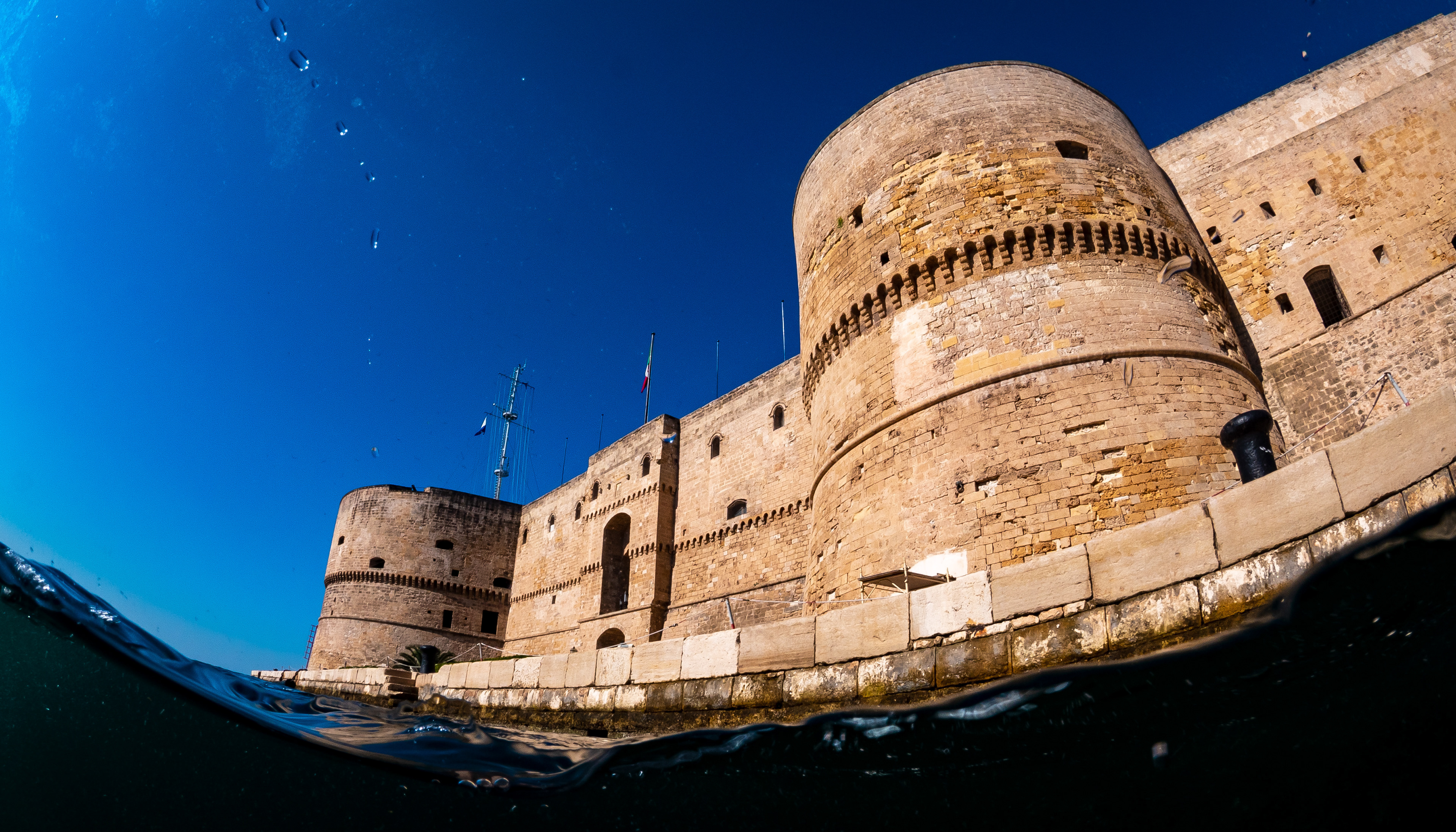
A bit of history...
The Castello Aragonese (or Castel Sant'Angelo) was built between 1487 and 1492 to protect against enemy attacks
The east side overlooks the Canale Navigabile (375 m long, 73 m wide and 12 m deep) that joins the Mar Grande to the Mar Piccolo and is overlooked by the Swinging Bridge
They represent the symbols of Taranto but, as famous as they are and immortalized in hundreds of pictures, the submerged part of the Canale is known only to "insiders"
Ponte San Francesco di Paola Girevole

The diver who dives under the Castle is immediately struck by the richness of the biocoenosis present along the walls of the Canale Navigabile.


The large rocky boulders used in the construction of the Canal are completely covered with a dense benthic community (i.e., composed of organisms living attached to the rocks) that appears as an explosion of different colors and shapes.
Rocks colonized by biocenosis "photophilic" are usually dominated by algae, which, like all plants, require strong exposure to light.
The Biodiversity of the community is even more evident in this "macro" the orange sponge
(Crambe crambe) enveloping the tubes "a 8" of a mollusk (Rocellaria dubia), or sponges (the black Hippospongia sp. and a light orange one) contend for space to the dark purple Bryozoans and to ascidians of various species.
It looks like a peaceful coexistence but in fact it is one frame from the film "Struggle for Space," in which each organism tries to expand the area it occupies.
The photo well represents the differences between solitary organisms and organisms colonial In this case, a solitary ascidian (are clearly evident the two siphons, inhalant and enhancing, which ensure the water circulation) is covered almost completely by the colony of another species of ascidians whose zoids (i.e., the individual "units" of the colony) are brown edged with yellow (Botryllus sp.).

Hydroids (photo down on the left) are Cnidarians and thus related to jellyfish with which they they share the presence of cnidoblasts, the stinging cells.
The benthic communities of the Channel featured many colonies of Plumularidae (of "feathers" like those pictured) as well as Eudendrium sp., the whose form is easily confused with a "bush" of algae Upon closer examination, one can observe the individual "polyps" (yes, these zoids are the true polyps, while the ones best known to us are the octopuses!)
Some Nudibranch Mollusks (see photo above) are able to feed on the hydroids and, thanks to their ability not to "explode" the cells urticants, they transfer them into their appendages (cerata), which in doing so become stinging in turn!
And this dangerousness of theirs is well manifested by their bright colors
That alarm potential predators. The photo down on the right shows an ovature
of nudibranchs.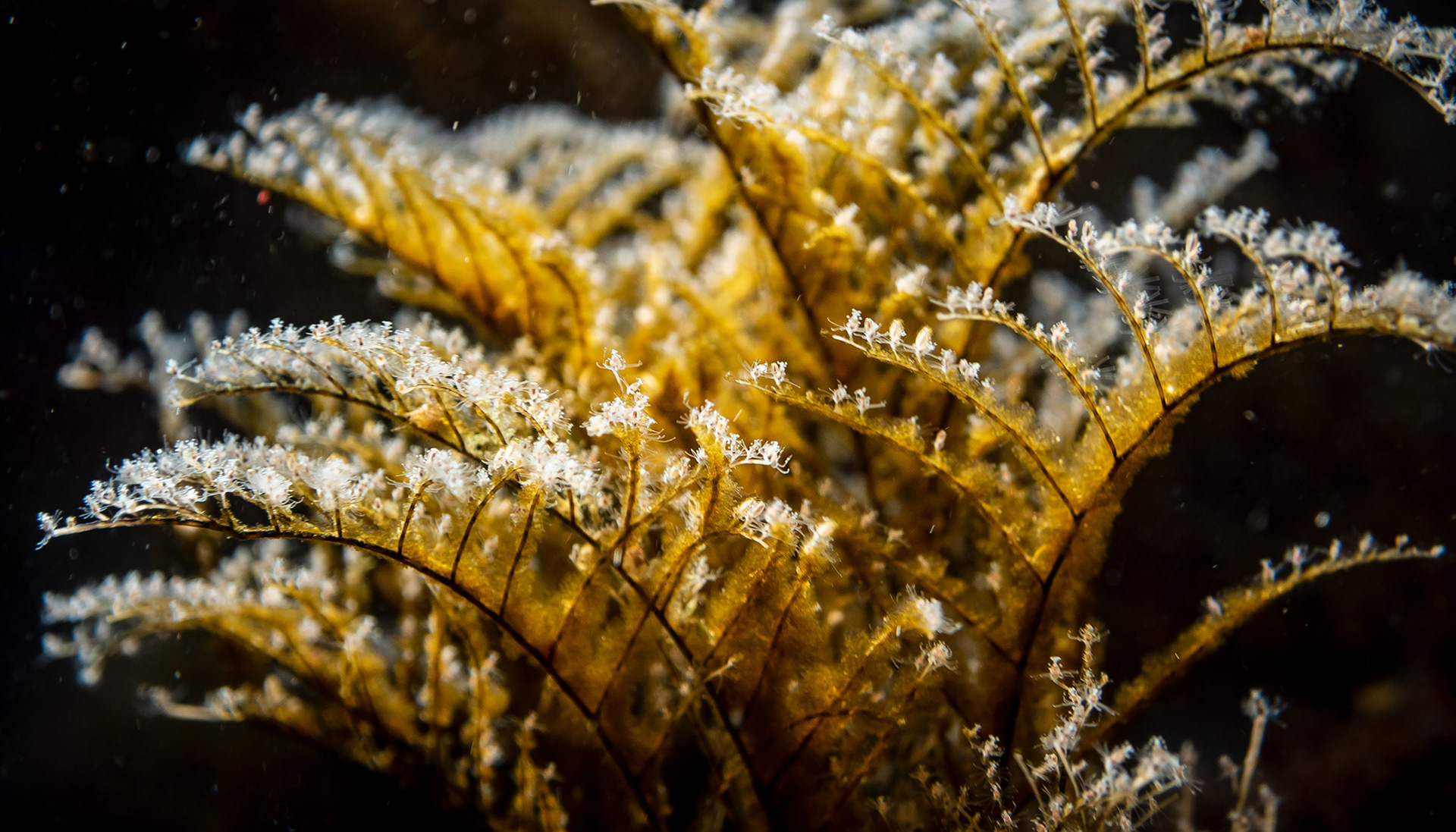
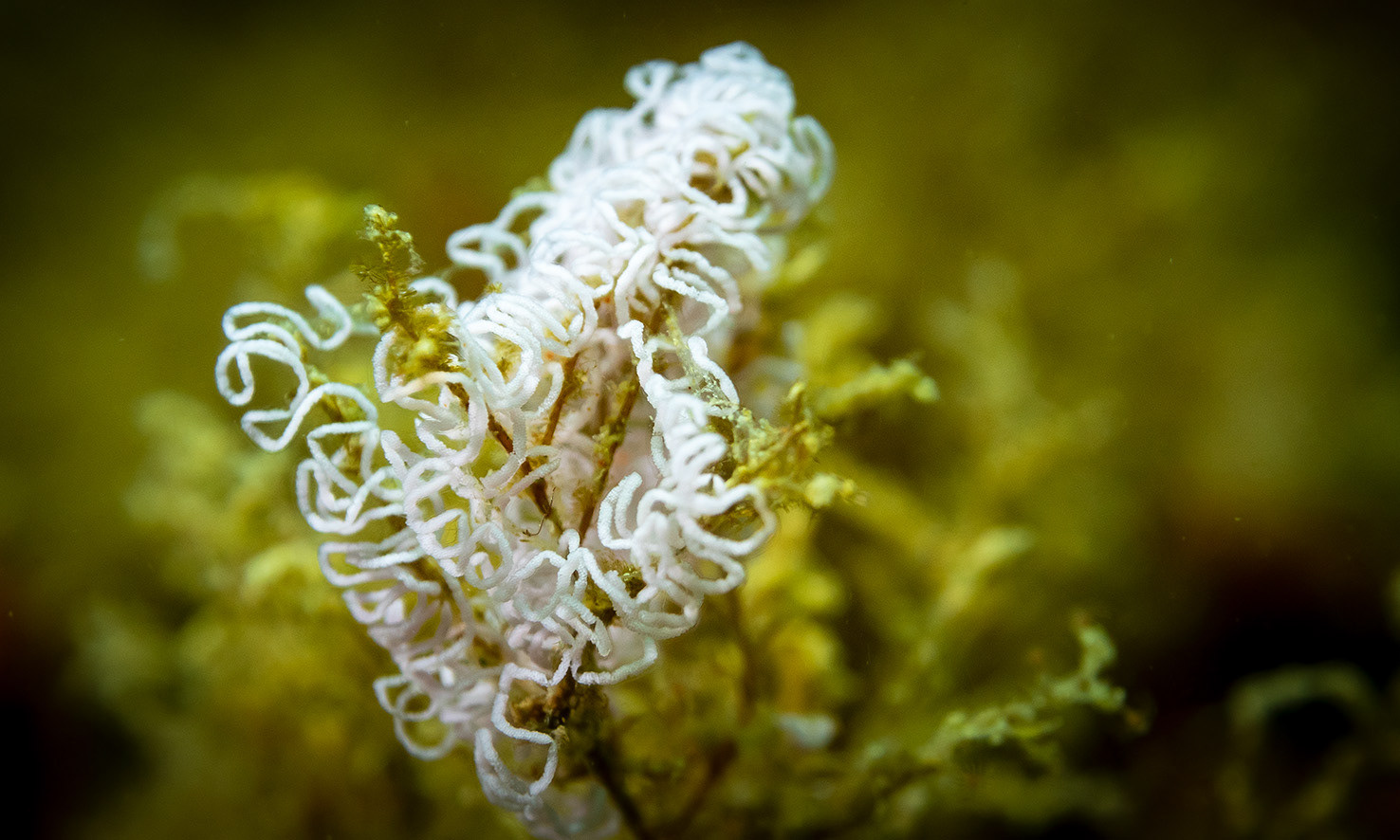
This crab, whose scientific name is Eriphia marmoratus, is a crustacean that can spend long hours even out out of the water as long as its gills are moist. It feeds on organic debris, small invertebrates and small crabs of other species.


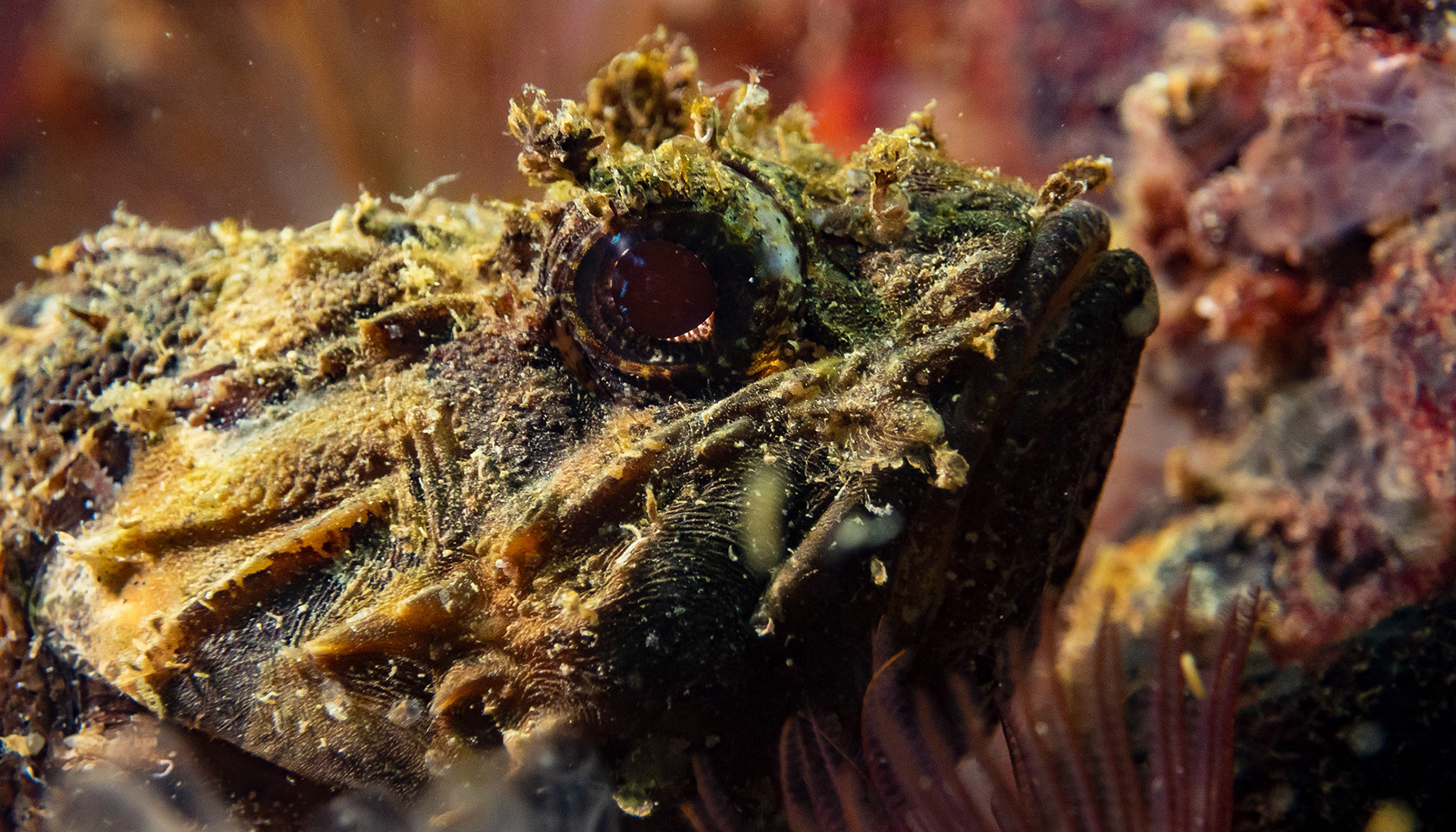
Left, The queen of the reefs is the brown grouper (Epinephelus marginatus), which can reach large sizes (up to 60 kg) It lives in close proximity to its burrow from which it only it leaves only to hunt.
Right, A meeting reserved only for the trained observers is that with the redfish (Scorpaena porcus), a champion in the art of camouflage.
Center, The peacock blenny (Salaria pavo) is a small fish that lives in rocky or sandy environments.
Backstage
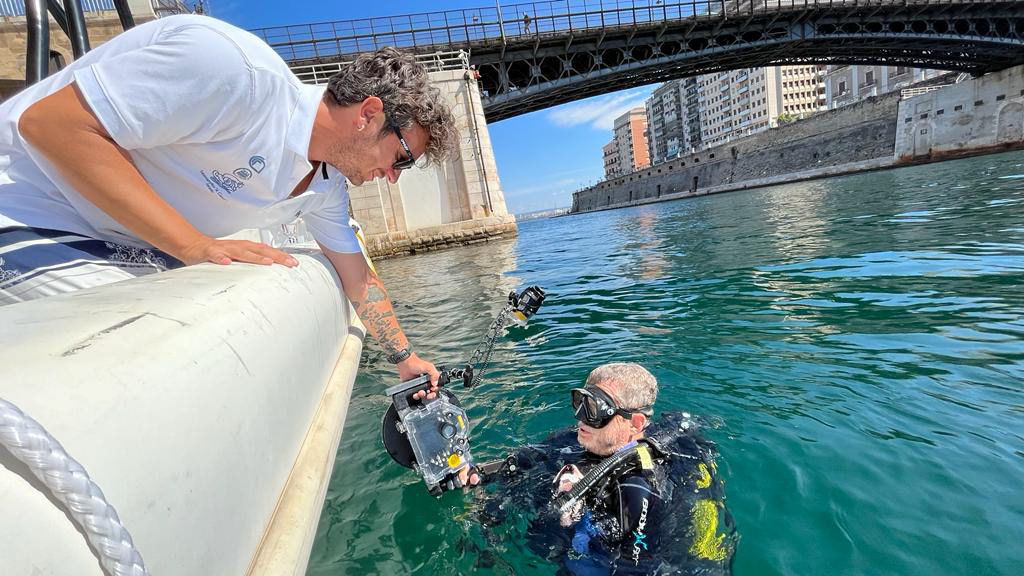

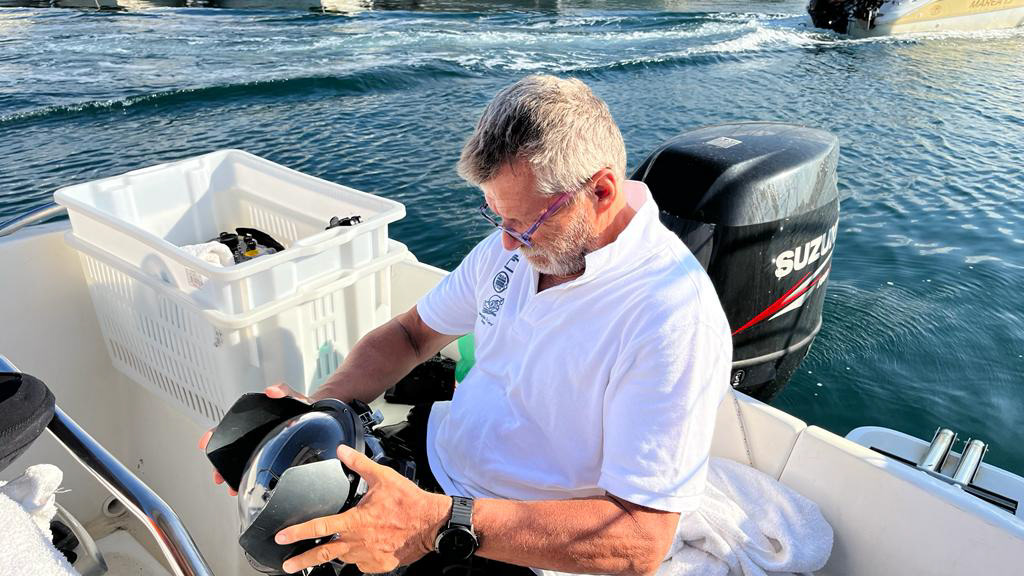

Thank you to Dr. Fanelli and Dr. Rubino CNR/IRSA for their scientific advice.